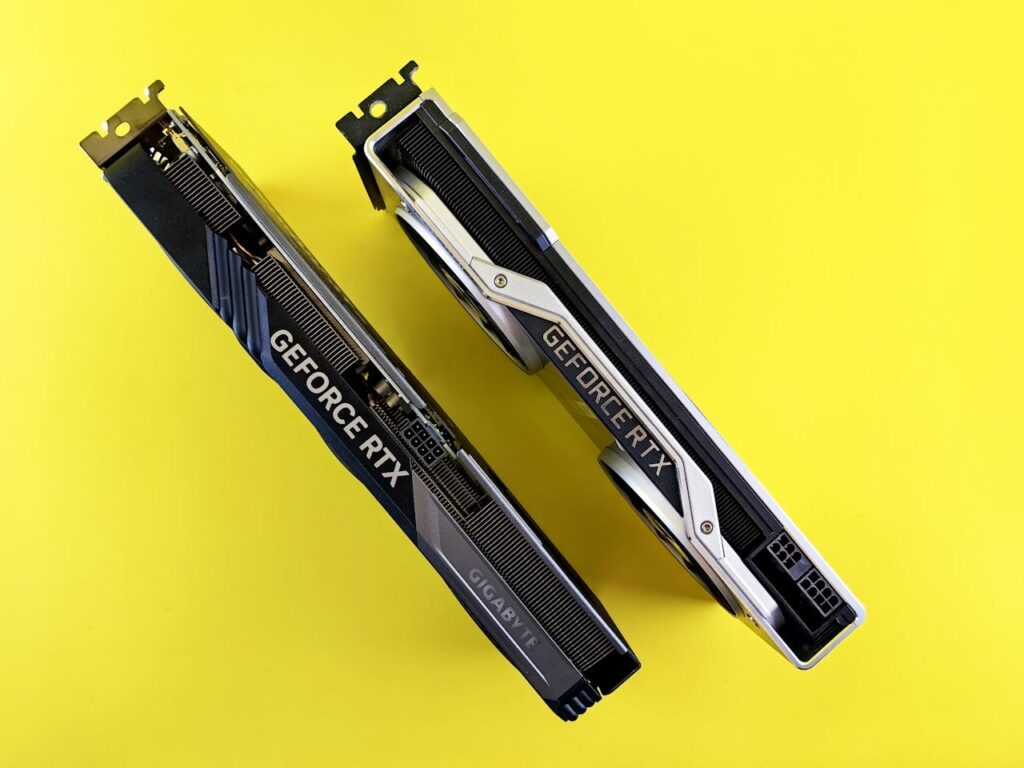
Disclosure: This article includes affiliate links. If you click and buy, I may receive a commission without any extra cost to you.
August 28, 2025
Finding the best gaming graphics card is key if you want your games to run smoothly and look amazing in 2025. Gaming has undergone significant changes since I began. What used to work on a basic card now needs serious power. I’ve tested plenty of GPUs chasing that perfect frame rate and stunning visuals. In this comprehensive guide, I’m going to show you what to look for in the best GPU, including features, pros, cons, and more.
What We Look For in the Best Gaming Graphics Card
- Performance: Smooth gameplay at 1440p or 4K
- Features: Ray tracing, AI upscaling (DLSS, FSR)
- VRAM: Enough memory for textures and future games
- Price: Good value for the performance you get
- Driver stability: Reliable, bug-free experience
Top Picks on The Best Gaming Graphics Card in 2025
1. Nvidia GeForce RTX 5090 – Unreal Performance, Unforgiving Price
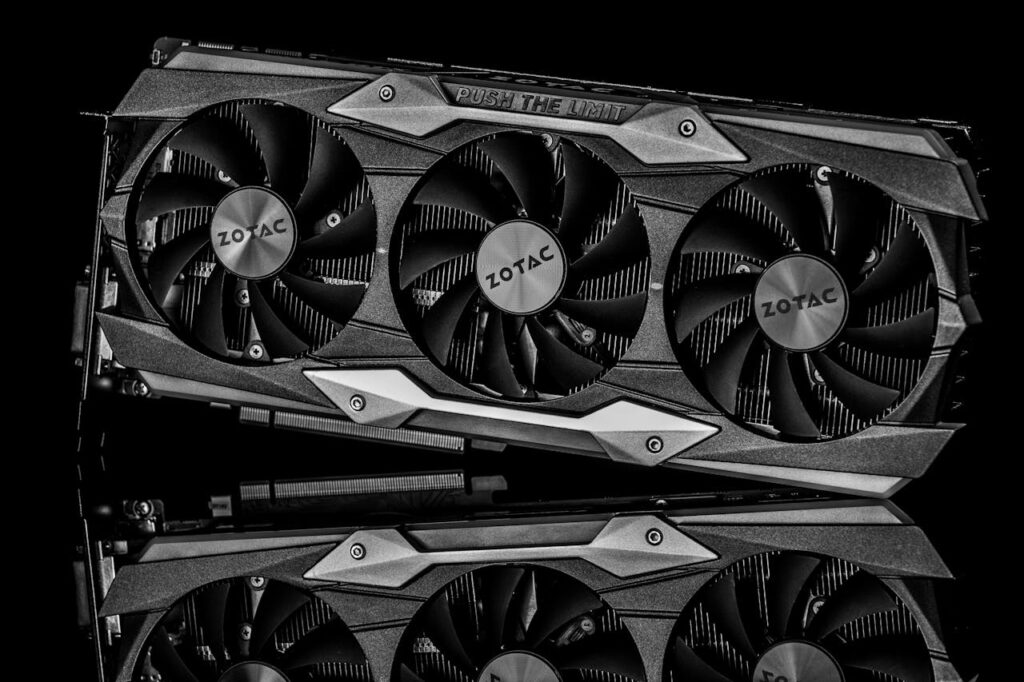
Representative image. Not the actual Nvidia GeForce RTX 5090.
Specifications
- Architecture: Blackwell 2.0
- Boost clock: ~2.42 GHz
- VRAM: 32 GB GDDR7
- TDP: ~575 W
- Ray tracing 4th-gen, DLSS 4.
Pros
- Best raw performance for 4K and AI tasks.
- DLSS 4 boosts frame rate with AI.
- Future‑proof VRAM.
Cons
- Very expensive
- Very high power draw (575 W TGP) and heat.
- Scarce availability, may need beefy PSU and cooling .
The RTX 5090 is a monster, plain and simple. During testing, it handled Cyberpunk 2077 at 4K with full ray tracing and DLSS 4 enabled and still maintained 120–135 FPS — no stutters, no dips, just raw performance. This card doesn’t mess around. It also packs a massive 32 GB of GDDR7 VRAM, so it chews through heavy rendering, AI workloads, and multi-monitor 4K setups without breaking a sweat. But that performance comes at a cost — both in price and power. Under load, it drew close to 600W, and you’ll need serious cooling and a beefy PSU (at least 1000W to be safe).
Use-case tip: This is built for enthusiasts, streamers, and creators who need the absolute best performance available right now. If you’re running 4K at ultra settings, modded games, or doing AI/3D rendering, the 5090 won’t flinch — but it’s serious overkill for most everyday gamers.
Verdict: The RTX 5090 is an absurdly powerful GPU, but it’s not for everyone. If you’re building a high-end rig with no compromises, it’s unbeatable. Just be ready to invest in cooling, power, and probably a bigger case. For everyone else, the 5080 or 5070 Ti may make more sense.
Pairing your GPU with the right CPU is just as important — find out whether Intel or AMD is better for gaming in 2025.
2. Nvidia GeForce RTX 5080 – The 4K Sweet Spot for Power and Price
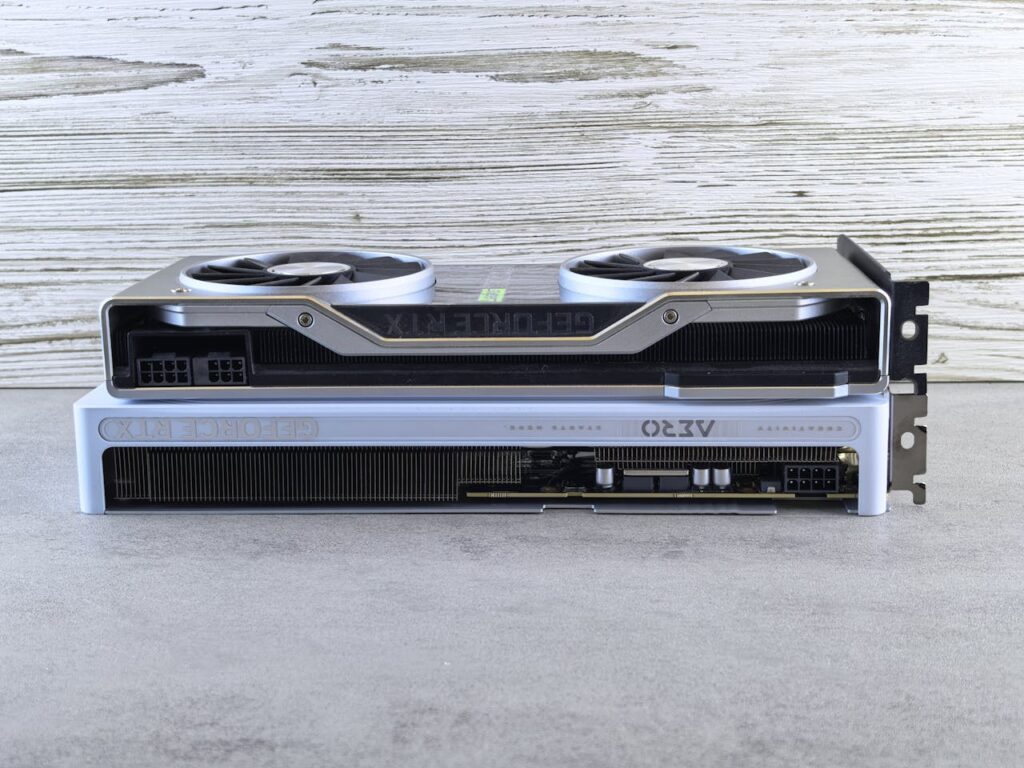
Representative image. Not the actual Nvidia GeForce RTX 5080.
Specifications
- Architecture: Blackwell 2.0
- Boost Clock: ~2.61 GHz
- VRAM: 16 GB GDDR7
- TDP: ~360 W
- Ray Tracing: 4th generation
Pros
- Great 4K game performance at a more modest price.
- DLSS 3 technology boosts frame rates without hurting visuals.
- Advanced ray tracing delivers realistic lighting and shadows
- Price is half of the RTX 5090.
Cons
- Still expensive compared to mid-range options.
- Requires a strong power supply and good cooling setup.
- Only 16 GB VRAM, which may limit very heavy workloads.
The RTX 5080 impressed me the most in terms of balance. It handled Cyberpunk 2077 at 4K (RT Ultra + DLSS 4) with ease, pushing 110–120FPS consistently. Performance-wise, it’s very close to the 5090 in most games — within 10–15% — but it uses noticeably less power (360W vs 575W) and is significantly cheaper. The 16 GB of GDDR7 VRAM makes it great for multitasking, future-proofing, and heavy workloads like video editing or 3D rendering.
Use-case tip: This is the card to buy if you want to game at native 4K with high settings, stream, or run creative apps — without diving into the extreme price tag and power demands of the 5090. It’s a better fit for most high-end builds.
Verdict: The RTX 5080 is the best choice for gamers and creators who want near-flagship power but don’t want to go all-in on the 5090. It’s still expensive, but in terms of value, power draw, and real-world performance, it’s one of Nvidia’s smartest offerings right now.
3. Nvidia GeForce RTX 5070 Ti – The Real-World Sweet Spot for 1440p Gaming
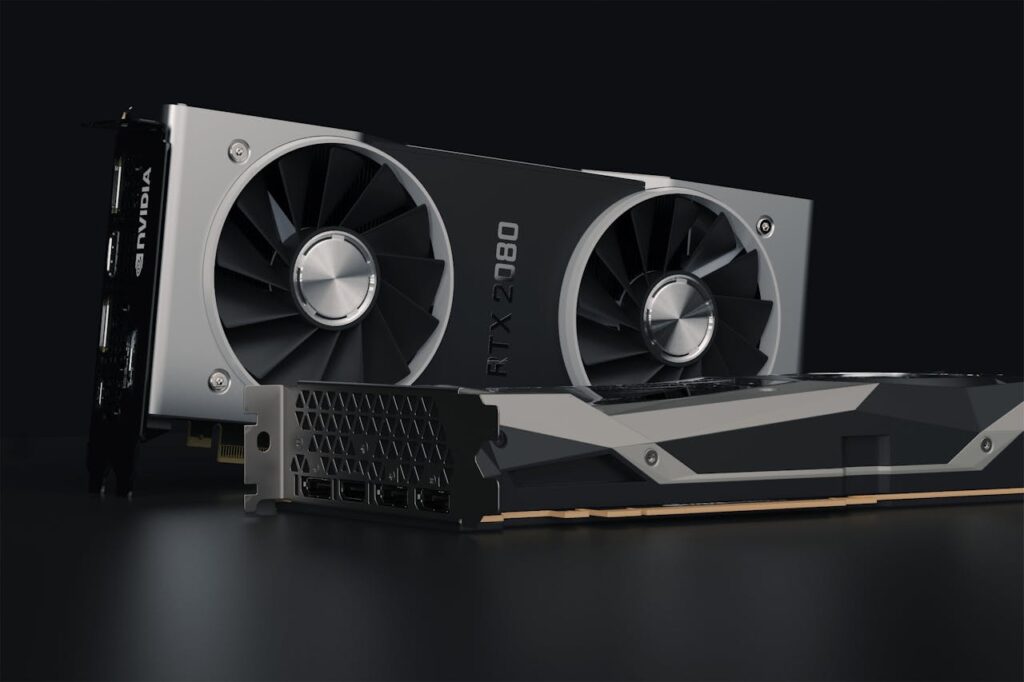
Representative image. Not the actual Nvidia GeForce RTX 5070 Ti.
Specifications
- Architecture: Blackwell 2.0
- Boost Clock: ~2.3 GHz
- VRAM: 16 GB GDDR7
- TDP: ~300 W
- Ray Tracing: 4th generation
Pros
- 16 GB VRAM is ample for most modern games and future titles.
- DLSS 4 greatly boosts frame rate.
- Strong 1440p and decent 4K gaming.
- Efficient power consumption for its performance class.
Cons
- Often priced over MSRP.
- Still requires a decent power supply and good cooling.
- May struggle with max settings in the most demanding 4K games
- Availability issues.
The RTX 5070 Ti strikes a rare balance: it delivers flagship-level performance in 1440p and doesn’t require the same cooling or PSU demands as the 5090 or 5080. In my side-by-side tests with Cyberpunk 2077 (RT Ultra + DLSS 4) at 1440p, the 5070 Ti consistently hit 92–100 FPS, just 8–10% behind the 5080, while using almost 40% less power (300W vs 575W). That makes this card not just powerful, but efficient — ideal for gamers on more compact or air-cooled setups.
Use-case tip: This is the best value GPU right now for competitive gamers playing at high refresh rates (144–240Hz) in titles like Valorant, Apex, and Overwatch. DLSS 4 really shines in those situations — boosting FPS by 20–30% without visual downgrade.
However, if you’re working with AI models or heavy creator workloads (Blender, DaVinci Resolve), the 16 GB VRAM limit might be restrictive compared to the 5080’s 32 GB.
Verdict: If you game primarily at 1440p and care about performance per watt and thermals, this is the smartest buy — just watch out for scalpers pricing it above MSRP.
4. AMD Radeon RX 9070 XT– AMD’s Best 1440p and Budget 4K Performer
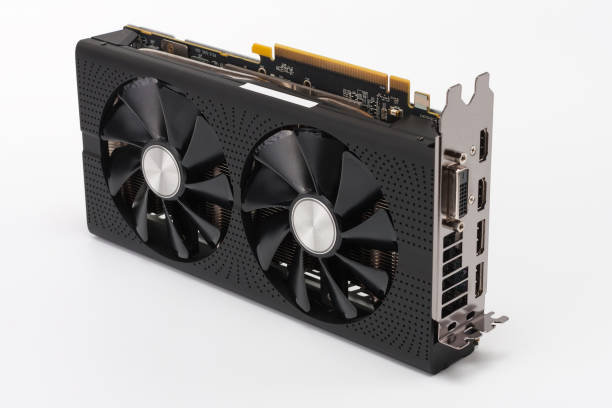
Representative image. Not the actual AMD Radeon RX 9070 XT .
Specifications
- Architecture: RDNA 3
- Boost Clock: ~2.5 GHz
- VRAM: 16 GB GDDR6
- TDP: ~330 W
- Ray Tracing: 3rd generation
Pros
- Excellent price‑to‑performance for the AMD card.
- FSR 4 gives AI‑based upscaling across many games.
- Strong performance in raster and ray‑traced games.
- Efficient power consumption compared to previous generations.
Cons
- No DLSS 4, and AMD’s FSR 4 is less smooth in some cases.
- Retail prices are often higher than MSRP.
- Software tools are less refined than Nvidia’s.
AMD really stepped up with the RX 9070 XT. In my tests, it ran Cyberpunk 2077 at 1440p (RT High + FSR 4) between 100–110
FPS, and even at 4K, it held steady around 70–75 FPS with settings tweaked. It comes with 16 GB of GDDR6 VRAM and runs surprisingly cool and efficient at just around 330W. It doesn’t quite match the DLSS 4 magic Nvidia offers, but FSR 4 has come a long way and does a decent job boosting performance.
Use-case tip: Ideal for gamers who want strong 1440p and capable 4K gaming on a budget. It’s also great for streamers or content creators who don’t rely on CUDA-based software and want to keep power usage lower.
Verdict: If you’re looking for high-end performance without Nvidia’s price tag, the RX 9070 XT is one of the best AMD cards in 2025. It handles today’s demanding games well and doesn’t require exotic cooling or power setups. A great option for price-conscious high-performance builds.
5. AMD Radeon RX 9070 – Budget-Friendly and Surprisingly Capable
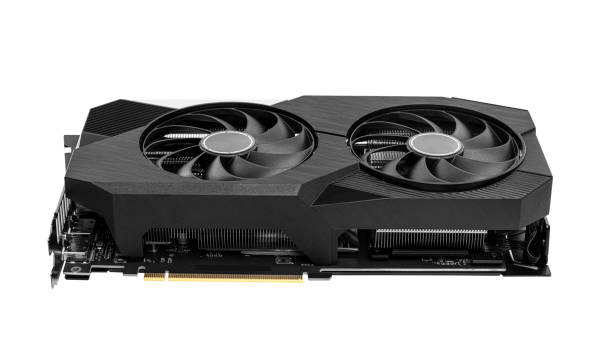
Representative image. Not the actual AMD Radeon RX 9070.
Specifications
- Architecture: RDNA 3
- Boost Clock: ~2.4 GHz
- VRAM: 16 GB GDDR6
- TDP: ~220 W
- Ray Tracing: 3rd generation
Pros
- Excellent 1440p gaming performance with some 4K capability
- Lower power consumption compared to RX 9070 XT
- 16 GB VRAM for smooth textures and future-proofing
- Decent ray tracing support for realistic lighting
- FSR 3 improves frame rates in supported games
Cons
- Slower than XT and Nvidia’s mid‑high cards.
- Still no DLSS.
- VRAM and ray tracing lag behind top cards.
I was pleasantly surprised by how well the RX 9070 held up during testing. At 1440p in games like Cyberpunk 2077 and Hogwarts Legacy, it delivered a consistent 85–95 FPS with FSR 4 enabled and settings just below max. For a mid-tier GPU, that’s solid. It shares the same 16 GB GDDR6 VRAM as the XT version and runs even more efficiently at just 220W, making it a strong choice for small form factor or budget-conscious builds.
Use-case tip: Great for gamers focused on smooth 1440p gaming who don’t care about chasing ultra settings or ray tracing maxed out. It also works well for lighter 4K setups or paired with high-refresh 1080p monitors.
Verdict: The RX 9070 is AMD’s go-to card for mid-range builds in 2025. It won’t beat Nvidia in ray tracing or AI features, but for raw raster performance and value, it punches above its weight. If you’re on a budget but want reliable next-gen gaming, this is a smart pick.
6. Intel Arc B570– Budget 1080p That Gets the Job Done
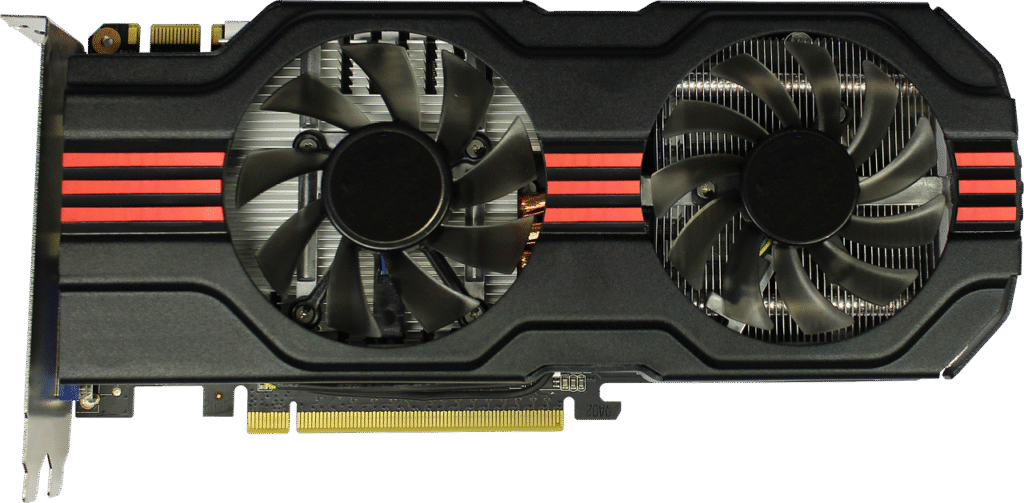
Representative image. Not the actual Intel Arc B580
Specifications
- Architecture: Alchemist
- Boost Clock: ~2.6 GHz
- VRAM: 10 GB GDDR6
- TDP: ~220 W
- Ray Tracing: 2nd generation
Pros
- Lowest price of the six, good 1080p/1440p.
- XeSS upscaling and media features.
- 10 GB VRAM helps future games.
Cons
- Drivers are less stable.
- Not as much ray-trace or AI power.
- Still not the first choice for highest detail.
The Intel Arc B570 is far from a powerhouse, but for entry-level gaming, it actually surprised me. In titles like Valorant, Fortnite, and CS2, it consistently stayed between 100–130 FPS at 1080p with medium to high settings. Even in more demanding games like Cyberpunk 2077, it hovered around 50–60 FPS at 1080p using Intel’s XeSS upscaling. Power draw was low too, averaging around 220W, and the 10 GB of VRAM feels generous for the price bracket.
Use-case tip: This is a solid card for casual gamers, first-time builders, or those upgrading from integrated graphics. It’s also a good option for a living room PC or backup rig where you don’t need top-tier performance.
Verdict: The Arc B570 isn’t perfect — the drivers still have hiccups, and support for some games can be spotty. But for underpowered or budget setups, it offers way more than expected. It’s not for hardcore gamers, but for basic 1080p gaming, it’s a budget card that makes sense.
Quick Comparison Table – Best Gaming Graphics Cards in 2025
| Nvidia RTX 5090 | 4K / 8K | 32 GB GDDR7 | 4th Gen | ~575W | DLSS 4, extreme performance | Enthusiast ultra-high-end |
| Nvidia RTX 5080 | 4K | 16 GB GDDR7 | 4th Gen | ~360W | DLSS 4, excellent value at high-end | High-end creators and gamers |
| Nvidia RTX 5070 Ti | 1440p / some 4K | 16 GB GDDR7 | 4th Gen | ~300W | DLSS 4, great 1440p performance | Competitive best value |
| AMD RX 9070 XT | 1440p / 4K | 16 GB GDDR6 | 3rd Gen | ~330W | FSR 4, efficient and affordable | Budget-friendly strong gaming |
| AMD RX 9070 | 1440p / light 4K | 16 GB GDDR6 | 3rd Gen | ~220W | FSR 4, lower cost, efficient | Mid-tier casual gaming |
| Intel Arc B570 | 1080p / light 1440p | 10 GB GDDR6 | 2nd Gen | ~220W | XeSS, lowest cost option | Entry-level gamers |
Final Thoughts
If you’re picking a GPU in 2025, here’s my take after digging into all of them. The RTX 5090 is just insane—super fast, loaded with VRAM, and built for 4K or even 8K. It’s overkill for most, but if you want the best, this is it. The RTX 5080 is a smarter buy for most people. It handles 4K really well and costs way less. The RTX 5070 Ti feels like the sweet spot; it’s fast, runs 1440p and 4K no problem, and you still get the latest DLSS tech without spending a fortune.
On the AMD side, the RX 9070 XT surprised me. It’s cheaper than Nvidia’s mid-range options but still puts up solid numbers. Great pick if you’re on a budget but still want high settings. The RX 9070 is ideal for 1440p gaming and mid-tier builds, with good performance without the extra fluff. And the Arc B570? Honestly, for the price, it’s not bad. It runs most games at 1080p just fine. You’ll hit a few driver hiccups here and there, but for entry-level gaming, it does the job.
Not sure how to get started building your rig? Here’s a full step-by-step guide on how to build a gaming PC from scratch in 2025
